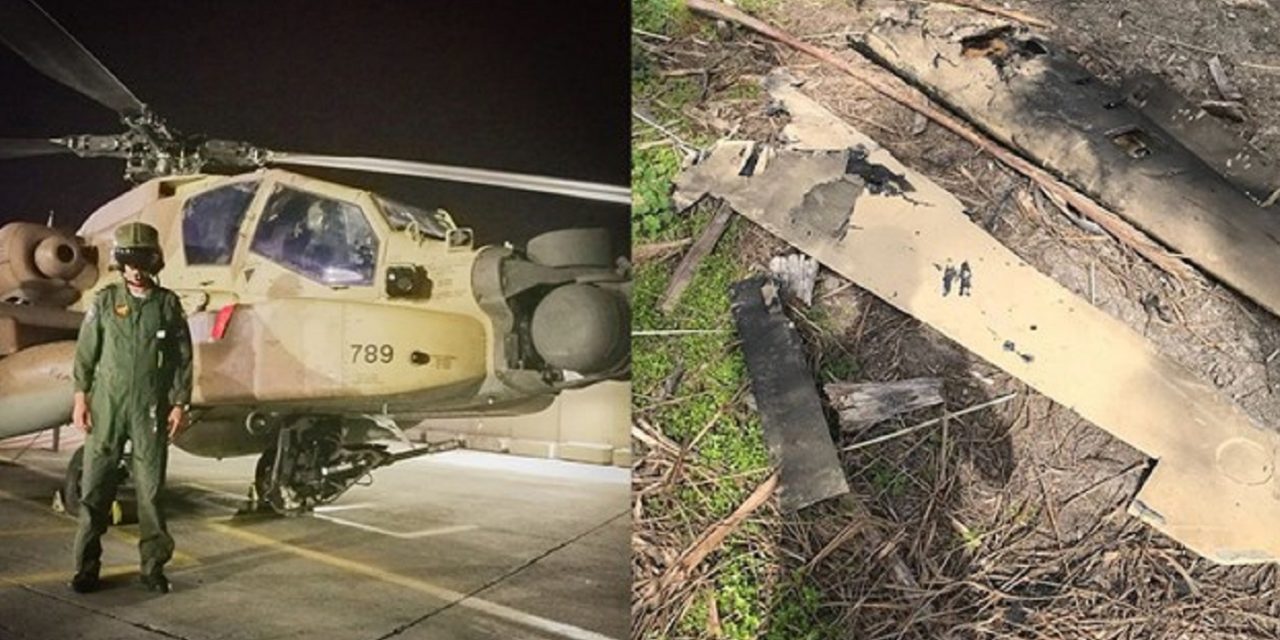On Saturday Israel intercepted an Iranian UAV (drone) that had breached Israeli airspace. Israeli fighter planes consequently conducted the largest strike on Syria since the First Lebanon War, hitting a mobile Iranian control centre that had sent the UAV and then striking 12 military targets in the country. One of Israel’s F-16 fighter jets crashed in northern Israel after being hit during the operation.
Many media reports, however, led readers to assume that Israel was the aggressor.
The Guardian’s headline, for example, read, “Israel launches ‘large-scale’ attack in Syria after fighter jet crashes”.
Probably the worst report was by London’s Evening Standard, which managed to assert that Israel first shot down an Iranian plane (not a drone) under the headline, “Israel launches ‘large scale attack’ on Syria after F-16 jet crash”, followed by a shocking first paragraph:
“Israel’s military shot down an Iranian plane before launching ‘large-scale attack’ on at least a dozen of Iran’s targets in Syria.”
Meanwhile a report by the BBC’s Newshour peddled Iranian propaganda that called into question whether the drone was Iranian at all and whether Israel’s response was justified, leading listeners to think that Israel’s attacks in Syria were unprovoked.
Here are the facts as they happened, including important video footage of the Iranian drone being eliminated:
The sequence of events
- The incident began in the early hours of Saturday morning when an Iranian UAV was spotted on its way into Israeli airspace and was shot down by an Apache attack helicopter once it reached Israeli territory on the Golan Heights.
- In response to the Iranian violation of Israeli sovereignty, Israeli Air Force (IAF) jets flew deep into Syria to hit the drone’s launch and control centre near Palmyra some 160 kilometres north of Damascus.
- As the jets returned home, a barrage of Syrian anti-aircraft missiles fired at the planes as they flew over Israeli territory, causing one F-16 to crash. One of the pilots suffered severe injuries as the result of what doctors described as penetration wounds, suggesting that he may have been hit by shrapnel from an anti-aircraft missile. The other pilot suffered light injuries.
- Twelve further targets were hit by the Israeli airforce inside Syria. Eight of them were Syrian targets, four were Iranian.
Israel destroys Syrian drone and its control vehicle – 10 February 2018
Here is footage of the Syrian UAV drone that entered Israel's airspace. The video shows it flying over Israel before the command was given to destroy it. The video then shows the hit on the Syrian control vehicle of the UAV where those flying it would have been.In response to this attack by Syria, earlier today the IDF, by IAF aircraft, targeted the Syrian Aerial Defense System and Iranian targets in Syria.Twelve targets, including three aerial defense batteries and four Iranian targets that are part of Iran's military establishment in Syria were attacked.During the attack, anti-aircraft missiles were fired towards Israel, triggering alarms that were heard in Northern Israel. An Israeli jet was also destroyed in the skirmish. The two pilots ejected, but both are injured and one is in a serious condition.Please SHARE the truth as some media sources are placing the blame on Israel and saying that Israel started the escalations, when in fact they were responding to an attack by Syria – and please PRAY for Israel and the wounded IDF men.#Israel #Syria #Iran #PrayforIsrael #AmYisraelChai #CUFI
Posted by Christians United for Israel – UK on Saturday, 10 February 2018
The drone
The word ‘drone’ might give the impression this was a remote-controlled toy from a gadget shop. Anti-Israel social media users certainly used this to accuse Israel of an overreaction. But its important to understand that this ‘Unmanned Aerial Vehicle’ was far from being a recreational toy.
Footage of the Iranian UAV that was shot down shows it heavily resembles a US stealth drone (Lockheed Martin RQ-170 Sentinel aerial reconnaissance UAV) that was downed in Iran in 2011. After being captured in Iran, President Obama asked for it back, but the request was rejected. The drone has advanced intelligence-gathering systems for electronic signals, images, communications and radar systems.
An IDF spokesman said the IDF knew from the drone’s flight path that it had a specific mission — but he wouldn’t provide any details, nor would he say if it had been armed. He confirmed that it was the first time an Iranian drone had crossed into Israeli airspace.
IAF Commander Tomer Bar said on Saturday, “The Iranian drone was a very advanced model. The Syrians have a lot of nerve to fire missiles at us, and we therefore operated in a very wide-scale and comprehensive fashion. The IDF response constitutes a severe blow to the Syrian air force’s defenses. We hit their fire control center, communications systems, and Iran’s listening centers.”
He described the drone as having a “low imprint” and challenging to detect. The IAF destroyed the mobile control center as it was on the move inside the T4 airbase and while under fire from surface to air missiles.
“The drone is in our hands and we will study it,” Bar said.

Israel’s response
Israel’s retaliatory strikes in Syria caused significant damage to the Syrian army’s defense network, according to several reports.
The IDF stated that IAF aircraft targeted the Syrian Aerial Defense System and Iranian targets in Syria. A total of 12 targets were hit, including three aerial defense batteries and four Iranian military targets.
IAF Commander Tomer Bar on Saturday said that the attacks were “the biggest and most significant attack the air force has conducted against Syrian air defenses since Operation Peace for the Galilee” in 1982.
“The IAF is prepared for any scenario and any eventuality while continuing to guard Israel’s skies and maintain its freedom of operation,” he continued. “The IAF’s aerial superiority has not been affected. We have scored an operational success vis-a-vis the Iranian challenge and those who operated the mission.”
Speaking at the beginning of the weekly Cabinet meeting on Sunday, Prime Minister Benjamin Netanyahu stated that Israel “dealt severe blows to the Iranian and Syrian forces. We made it unequivocally clear to everyone that our rules of action have not changed one bit; we will continue to strike at every attempt to strike at us. This has been our policy and it will remain our policy.”
IDF News Flash – February 12, 2018
Welcome to the IDF’s very own podcast!Tune into this week’s episode to catch up on what happened in Israel this weekend.
Posted by Israel Defense Forces on Monday, 12 February 2018










